AI has taken a lot of media attention of late. What I’d like to do in this article is to cut through the hype and show you 5 products which will dramatically affect your approach to EdTech in the coming months. These products (or similar ones) will be invaluable to you whether you are a manager, content creator or consumer of edTech content.
We will then examine where this fast-moving field is heading and what exciting and truly remarkable developments you can expect in the near future.
Chat GPT
Chat GPT – now serving as the flagship of AI – has been adopted at a rate never seen before in the history of the internet. To reach a million users, Netflix took 3.5 years, Twitter took 2 years, Facebook took 10 months, Spotify took 5 months, and Instagram took 2.5 months. Chat GPT took only five days to reach one million users. Only two months after its launch, it had 100 million active users. The best way to explain the success is to use it, visit https://chat.openai.com/chat and ask it to write you a Shakespearean sonnet, a pub quiz or summarise War and Peace in 200 words. If you have not done so, so it, take your jaw floor and then start to have a conversation with it. Ask it to change the sonnet to a song by Bob Dylan, make the pub quiz about the 1980s or ask for the book summary to be condensed to 50 words. The engine adapts and will bend to your wishes. It is not a search engine; its answers are generated from scratch each time rather than regurgitated from a website.
So how can this apply to edTech? Ask Chat GPT to construct a curriculum, write a training script or a quiz on any given topic. The results may not always be quite what you are looking for, but they can be edited and are generally pretty good.
Chat GPT does this by absorbing vast quantities of data from forums, posts and websites and it is constantly fine-tuned by human feedback. It also knows about learning styles and pedagogical models, selecting the best approach for the training material. It may not be perfect, but it’s getting close. You can of course find holes in the interpretation of facts, but the point is that AI engines such as this one are growing and training themselves all the time. They are getting better to the point that in 6 months’ time, the results we are seeing now will be primitive by comparison. The time to get used to working with an AI engine is no. I would also say that despite bad press, Google is coming back into this space with its engine Bard. They have been working a lot longer and buying up experts in this area for over 10 years now so I’d look into their offering with interest when it’s launched.
Midjourney
Midjourney is one of the most fun AI tools on the market at the moment. Midjourney is an image creation AI engine which has been trained on millions of images in a variety of styles and uses that knowledge to create images from scratch. Midjourney works through the Discord chat engine, simply add the Midjourney server and type an /imagine command, here you can see 4 examples it has given, these can be enlarged and utilised in elearning to create immersive environments in which you can place your training.
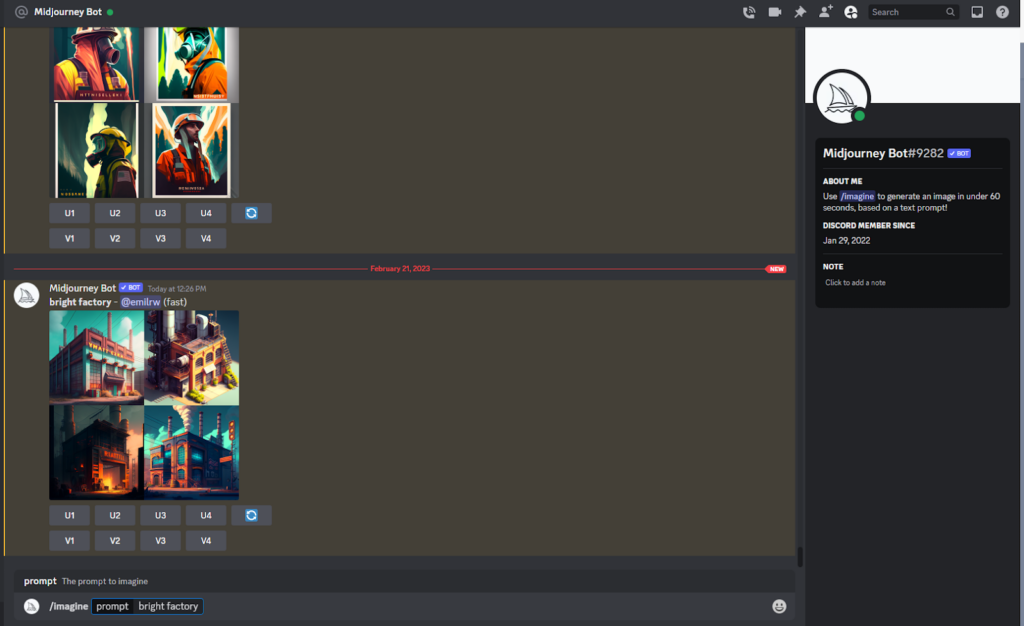
There is no need for any design input, simply type in the description, desired aspect ratio etc and voila: an image is born! Midjourney has a gothic feel to it, if you don’t mind a bit of ‘drama’ in your images. If that’s not for you, then other image creation tools do exist (e.g. DALL-E from Open AI the people behind Chat GPT) but we have found Midjourney gives the most impressive results.
Microsoft Power BI / Excel / Google Sheets
It may surprise you to see these data analysis tools listed in an article about AI, but AI has been embedded in these systems for years. AI can be used to ask natural language questions about the data to get meaningful results. For instance, in Google Sheets hold down Shift + Ctrl + X and you will now see an Explore menu come up on the right-hand side of the screen. Use this to ask questions directly from the data; for example, what is the most popular category, or how many subcategories are there? It will also automatically create graphical views of the data.
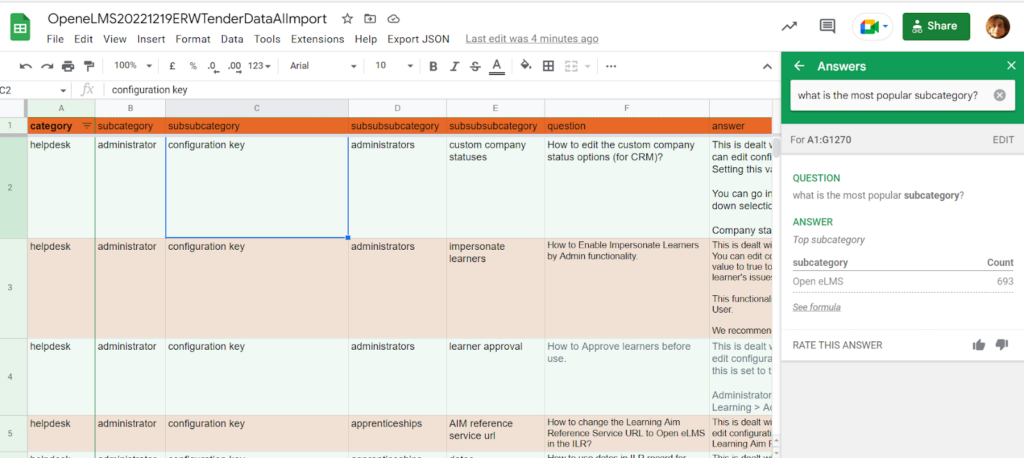
Learning Management Systems will increasingly move to adopt this method of analysis rather than putting the onus on the user to create data views and analyse reports. I believe you will see features like this in your LMS (as well as your connected Management Information Systems) very soon.
Mykeyworder
Mykeyworder is a handy tool for ‘reading’ images. The traditional view of image data is that the image itself is a blank slate; you would need a human to analyse the data and add a list of keywords to describe the image.

AI – and specifically mykeyworder (www.mykeyworder.com/) – can automate this process. It has an easy-to-use API which can link to your application to bring meaning to your imagery. This will enable content curators to compile a list of imagery to be used for learning purposes and learners to search the same repository for appropriate content.
D-id
D-id (www.D-id.com) allows you to create video presenters from text or uploaded voice. Editors can upload the face of anyone and it will create a video character.
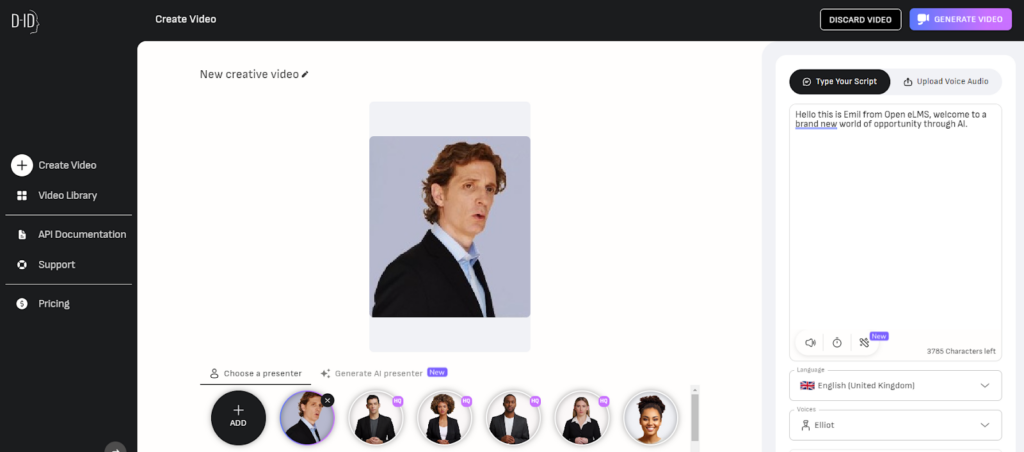
The videos it creates are convincing, using lip synching technology with any pre-selected voice. The video can be downloaded and used in elearning or as stand-alone resources to add personalisation to learning content.
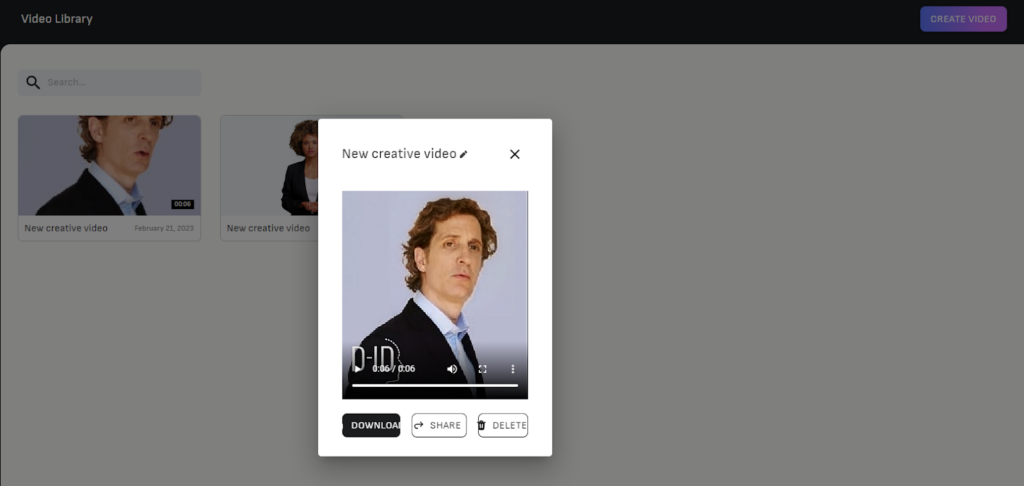
Other Tools
I have previewed my favourite AI tools, but there are plenty more which we are using on a daily basis to shape the Edtech systems and content we provide at Open eLMS. An honourable mention also needs to also go to resemble.ai (https://www.resemble.ai/) which is a tool kit for creating automated voiceovers in the voice of anyone from your organisation and descript (https://www.descript.com/) which does something similar but also uses AI to edit video content in a really engaging way.
The Future
As mentioned, AI is a rapidly evolving technology. I remember giving a presentation of some elearning ten years ago where we used green screen actors in an elearning course (a common feature in our work.) The client asked whether, once we’d completed filming, we could change the text and have the pre-recorded actors change what they were saying. We suppressed a few giggles at the suggestion that we could change a recording after the fact. Well, the joke is on me because that is now very possible and this is only the start.
AI images from 2 years ago are barely recognisable. Now, within less than a minute an image such as the one below can be produced from a simple text prompt.

The work has already started with creating videos in the same way and early efforts are impressive – albeit a little disturbing at times (https://makeavideo.studio/). Perhaps in a few years’ time, we will be able to ask our AI to create a movie for us where we are the star. And if creating your own movies is possible, then creating your own video training certainly is.
Open eLMS is already bringing these technologies together into a single system – openelms.ai. The system – currently in beta form – generates elearning from a single text prompt. The system writes the script, generates images, designs screens and creates voiceovers. The end product is an extremely high-quality, immersive, multimedia elearning course with a quiz in under a minute. This Adobe/Articulate killer will be released in April 2023.
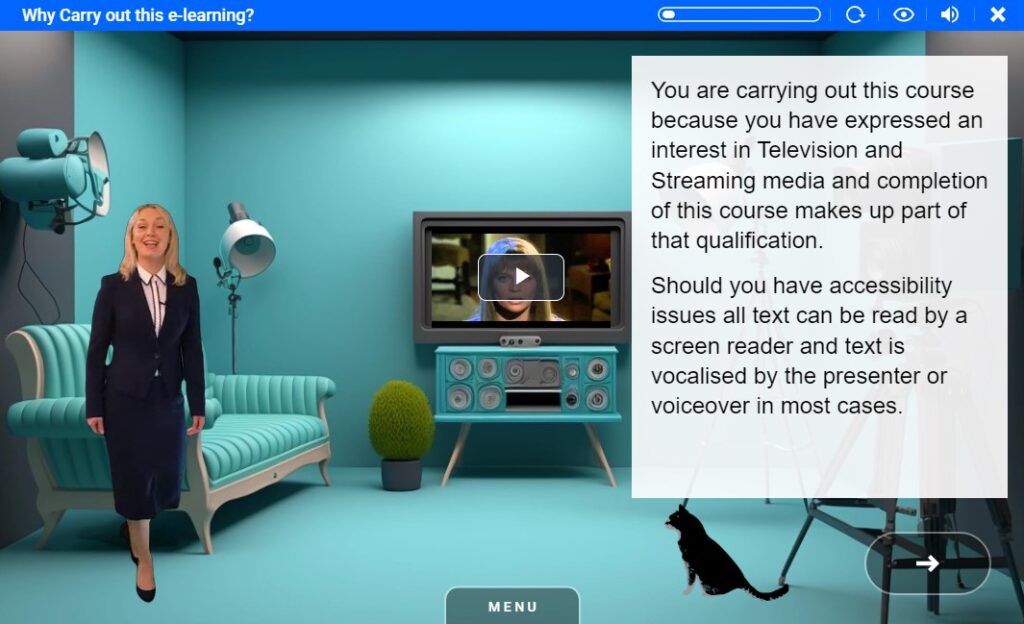
This future is coming very soon. Learning is changing – that is the lesson AI has to teach us in Edtech.
